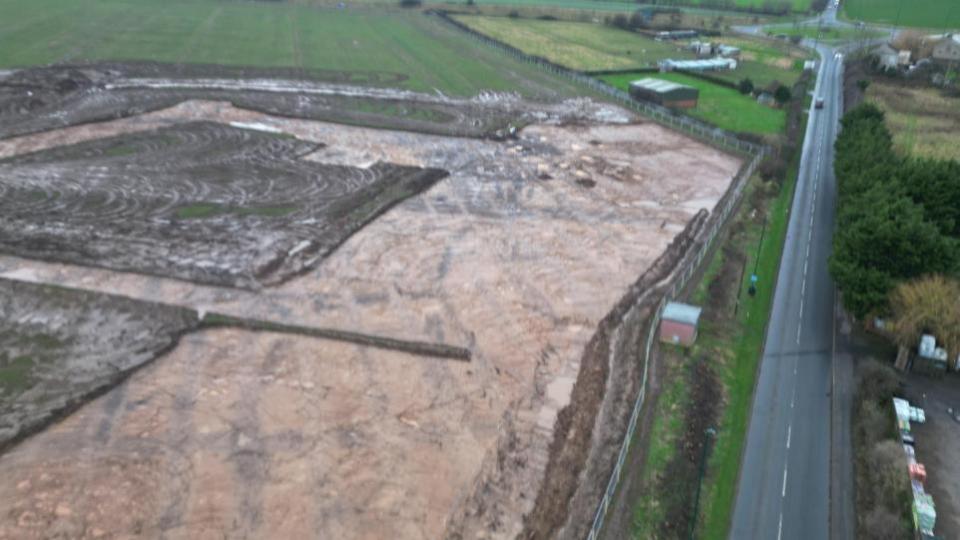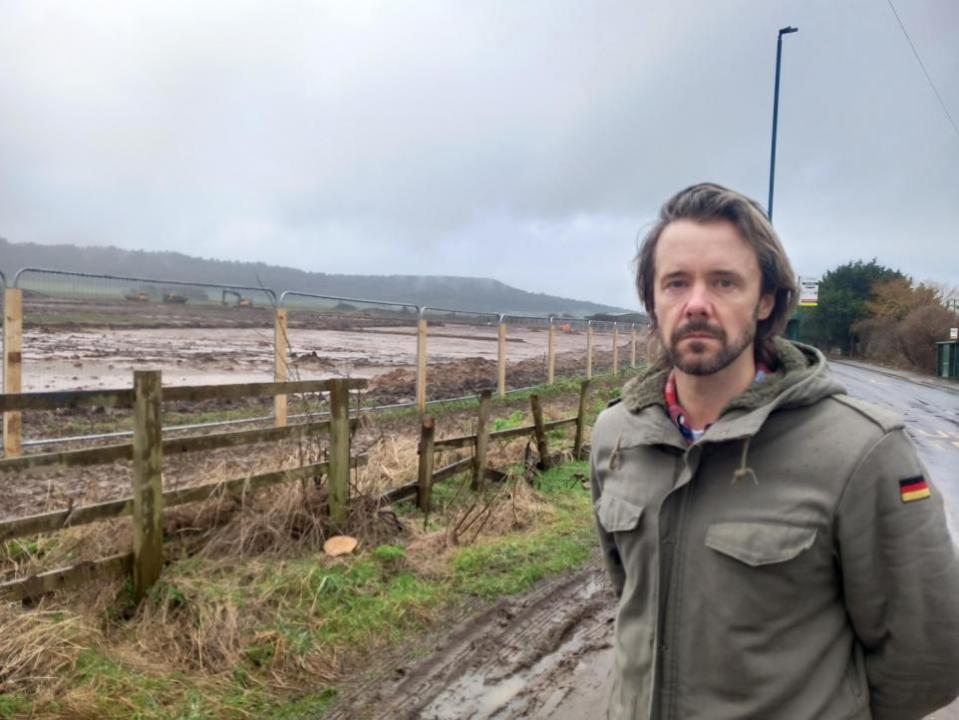Calls have been made to stop a massive housing development on the edge of Marske following the discovery of historic archaeological remains.
Local councilor Dr Tristan Learoyd claimed there was evidence of a Roman villa and outbuildings found for half a mile along a right of way known locally as Plummers Lane, which was significant and could be of “national importance”.
However, developers Taylor Wimpey and Miller Homes said while confirming some ‘Romano-British remains’, no villas or outhouses had been found so far.
Preparatory works are underway for an 812 home development on a brand new site bordering Longbeck Road, the A1085 and A174, with permission also in place for a convenience store, primary school, nursery, surgery and pharmacy, community hall, petrol filling. station, drive-thru restaurant, pub and hotel.
Cllr Learoyd, who chairs the planning committee on Redcar and Cleveland Council, said he had written to the secretary of state to “demand a halt to development until the site is fully excavated and to ensure the site is not destroyed historical”.


The development first received outline planning permission in 2017 after an appeal with more detailed questions was approved by the council last year at a stormy meeting which heard allegations from then committee chairman Cllr Stuart Smith of threats and bullying related to protesters.
In November it emerged that contractors had mistakenly erected fence posts on the edge of a scheduled ancient protected monument next to the proposed new housing – the remains of a manorial settlement, a dovecote and a medieval park system.
Marske resident Peter Finlinson, a local parish councilor who has been at the forefront of opposition to the scheme, said the matter had been reported to Cleveland Police and condemned the “reckless actions”.
Local residents had previously flocked to the village to publicly voice their anger at the cutting of hedgerows to provide access points for building sites, which were said to be hiding wildlife.
Cllr Learoyd said he realized the archaeological finds had taken place earlier last year, but only found out last week after visiting the site on his bike and speaking directly to contractors working for local archaeological services company.
He said: “They said they had found Roman remains – a ladder settlement – I didn’t know what it was and I had to look it up.
“I put up a Facebook post and other archaeologists started looking at it.”


Cllr Learoyd said there could be more and suggested that the entire planning permission in place may have to be “revoked”.
He said: “To me there is no way they are building something like this.”
Karl Steanson, who lives locally and collected aerial images of the site, said there was strong evidence to suggest a large early settlement, including the possible remains of a round house – a type of housing built in Bronze Age Britain until the Iron Age was created from stone. and with thatched roofs.
A spokesman for the Taylor Wimpey and Miller Homes consortium said: “As part of our pre-commencement work, we have been actively working with archaeologists, the council and Historic England to record the archaeological remains identified from a geophysical survey at Marske-By . -The sea.
“This work has revealed some Romano-British remains, but no Roman villas or outhouses have been discovered so far.
“Our archaeological consultants continue to work diligently with various parties to ensure that all historical findings are preserved as required.”
The statement said that all the ongoing work had been agreed with an archaeological consultant for the council, which acts as the local planning authority.
Meanwhile, the previously installed fence posts were being removed under archaeological supervision in line with Historic England guidance with no impact on the scheduled monument.
A spokesman for Historic England said: “We are aware of an archaeological discovery at a housing development site in Marske-by-the-Sea and are providing technical advice to the developer’s archaeological contractor.
“It is our understanding that the contractor is adhering to best practice in this matter and is working in close consultation with the local authority.”
Councilor Lynn Pallister, cabinet member for growth and enterprise, said the current planning permission contained a condition that the developers could inspect land in front of the scheduled ancient monument and that these findings had already been shared with the council .
She said: “The wider site was not subject to any archaeological conditions, but the developer has agreed to undertake further archaeological works to ensure the land is recorded before development proceeds.”